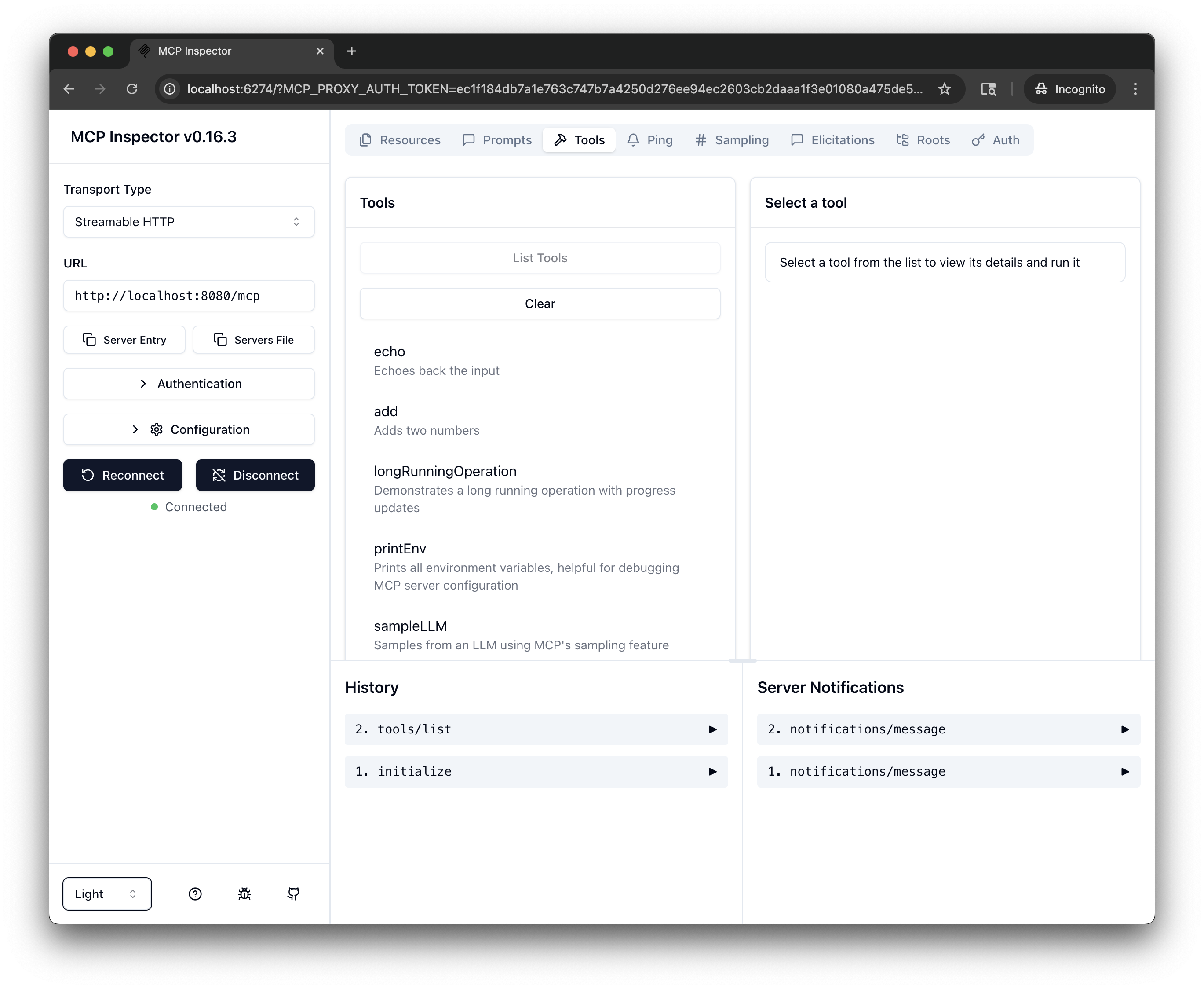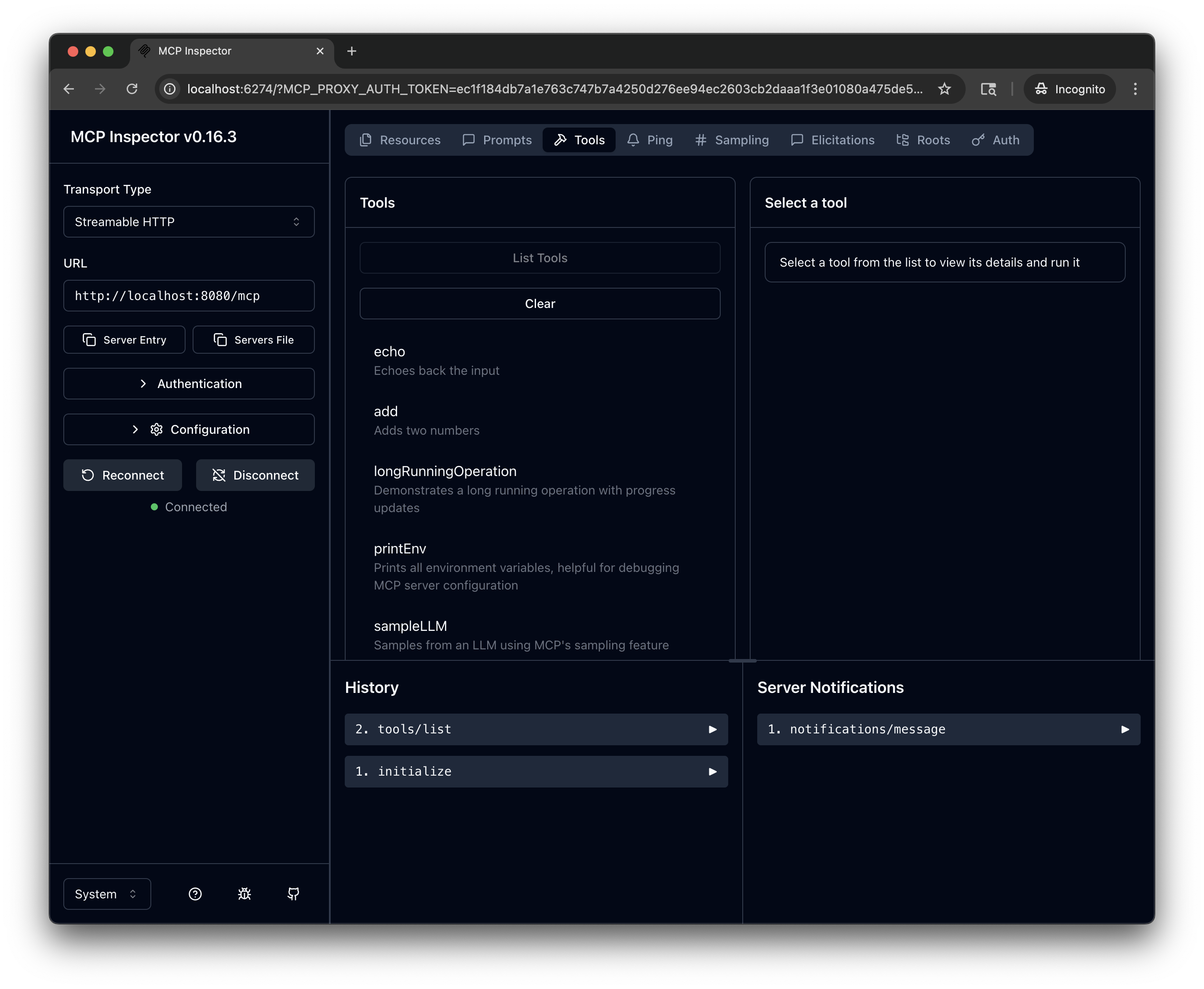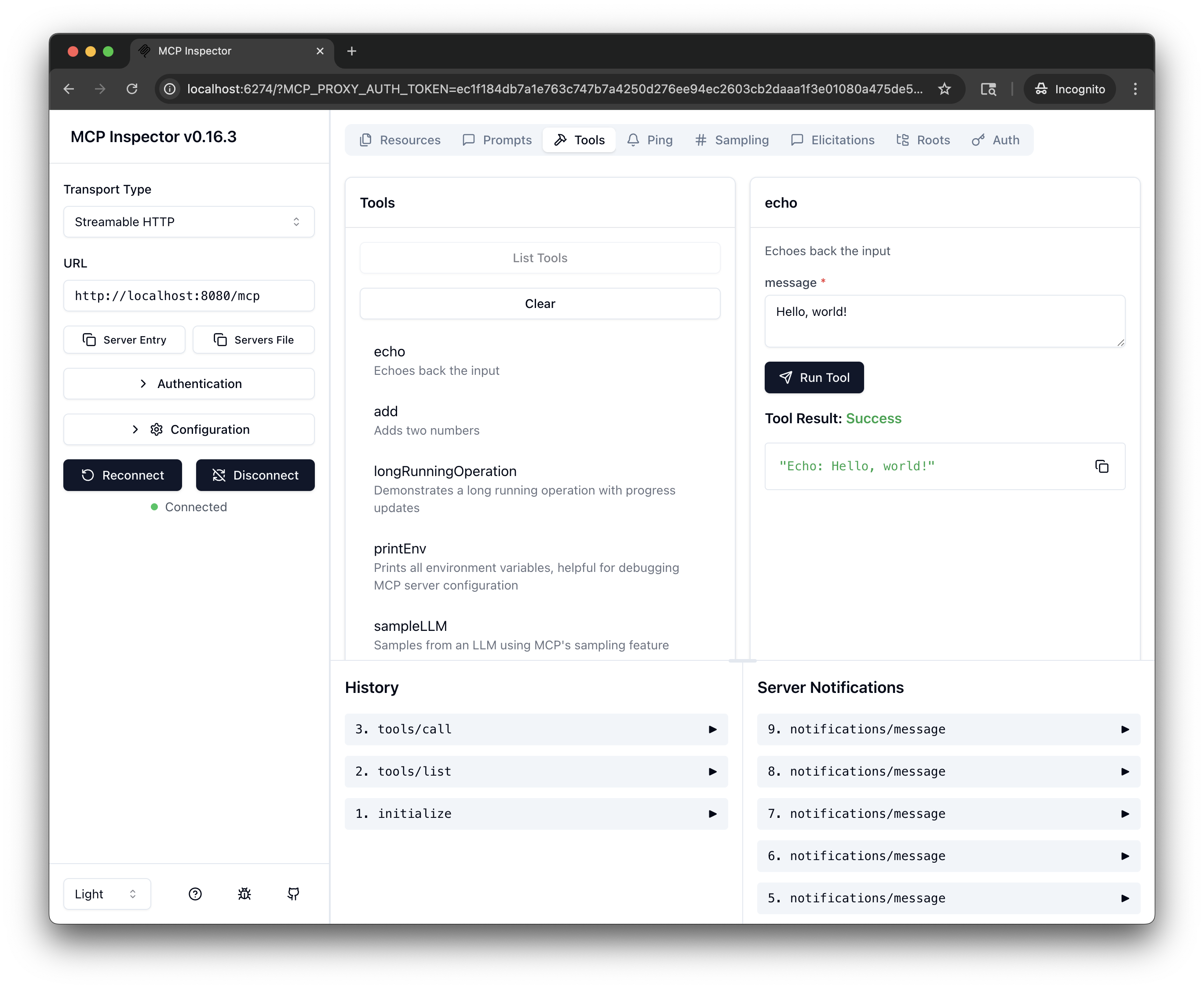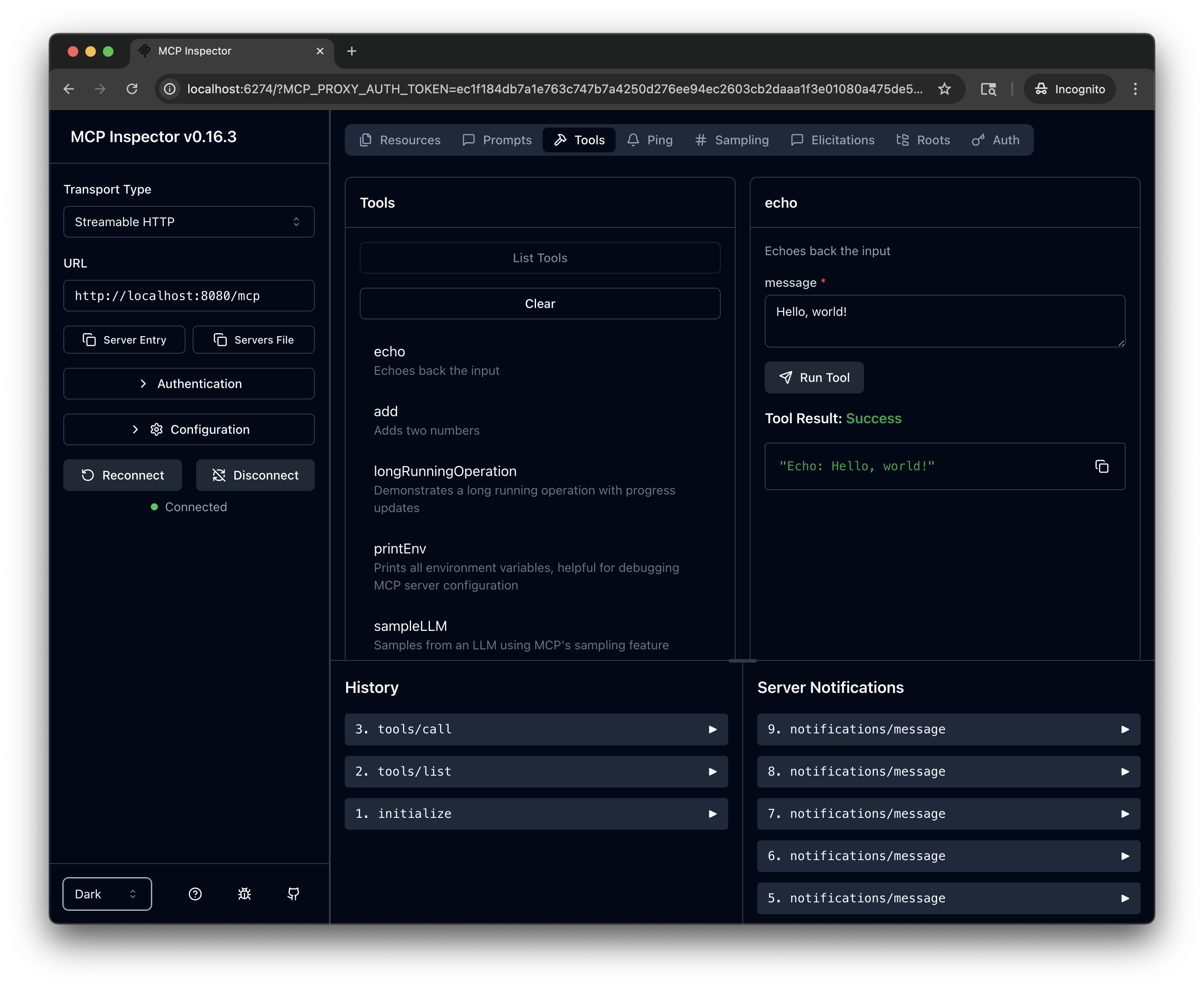Dynamic MCP
Route to a Model Context Protocol (MCP) server dynamically by using a label selector. This way, unlike a static backend, you can update the backing MCP server without having to update the Backend resource. For more information, see the About MCP topic.
Before you begin
-
Install the kgateway control plane and enable the agentgateway Agentgateway An open-source data plane optimized for agentic AI connectivity. integration.
-
Verify that the agentgateway integration is enabled.
helm get values kgateway -n kgateway-systemExample output:
agentgateway: enabled: true
Step 1: Deploy an MCP server
Deploy an MCP server that you want agentgateway to proxy traffic to. The following example sets up an MCP server that provides various utility tools.
-
Create an MCP server (
mcp-server) that provides various utility tools. Notice the following details about the Service:appProtocol: kgateway.dev/mcp(required): Configure your service to use the MCP protocol. This way, the agentgateway proxy uses the MCP protocol when connecting to the service.kgateway.dev/mcp-pathannotation (optional): The default values are/ssefor the SSE protocol or/mcpfor the Streamable HTTP protocol. If you need to change the path of the MCP target endpoint, set this annotation on the Service.
kubectl apply -f- <<EOF apiVersion: apps/v1 kind: Deployment metadata: name: mcp-server-everything labels: app: mcp-server-everything spec: replicas: 1 selector: matchLabels: app: mcp-server-everything template: metadata: labels: app: mcp-server-everything spec: containers: - name: mcp-server-everything image: node:20-alpine command: ["npx"] args: ["-y", "@modelcontextprotocol/server-everything", "streamableHttp"] ports: - containerPort: 3001 --- apiVersion: v1 kind: Service metadata: name: mcp-server-everything labels: app: mcp-server-everything spec: selector: app: mcp-server-everything ports: - protocol: TCP port: 3001 targetPort: 3001 appProtocol: kgateway.dev/mcp type: ClusterIP EOF -
Create a Backend for your MCP server that uses label selectors to select the MCP server.
kubectl apply -f- <<EOF apiVersion: gateway.kgateway.dev/v1alpha1 kind: Backend metadata: name: mcp-backend spec: type: MCP mcp: targets: - name: mcp-server-everything selector: service: matchLabels: app: mcp-server-everything EOFℹ️Plan to attach policies to your selector-based Backend later? You can still attach the policy to a particular backing Service. To do so, set thetargetRefsetting in the policy to the backing Service, not to the Backend’s service selector. Include thesectionNameof the port that you want the policy to apply to. For an example, check out the BackendTLSPolicy guide.
Step 2: Route with agentgateway
Route to the MCP server with agentgateway.
-
Create a Gateway resource that uses the
agentgatewayGatewayClass. Kgateway automatically creates an agentgateway proxy for you.kubectl apply -f- <<EOF apiVersion: gateway.networking.k8s.io/v1 kind: Gateway metadata: name: agentgateway spec: gatewayClassName: agentgateway listeners: - protocol: HTTP port: 8080 name: http allowedRoutes: namespaces: from: All EOF -
Verify that the Gateway is created successfully. You can also review the external address that is assigned to the Gateway. Note that depending on your environment it might take a few minutes for the load balancer service to be assigned an external address. If you are using a local Kind cluster without a load balancer such as
metallb, you might not have an external address.kubectl get gateway agentgatewayExample output:
NAME CLASS ADDRESS PROGRAMMED AGE agentgateway agentgateway 1234567890.us-east-2.elb.amazonaws.com True 93s -
Create an HTTPRoute resource that routes to the Backend that you created in the previous step.
kubectl apply -f- <<EOF apiVersion: gateway.networking.k8s.io/v1 kind: HTTPRoute metadata: name: mcp labels: example: mcp-route spec: parentRefs: - name: agentgateway namespace: default rules: - backendRefs: - name: mcp-backend group: gateway.kgateway.dev kind: Backend EOF
Step 3: Verify the connection
Use the MCP Inspector tool to verify that you can connect to your MCP server through agentgateway.
-
Get the agentgateway address.
export INGRESS_GW_ADDRESS=$(kubectl get gateway agentgateway -o=jsonpath="{.status.addresses[0].value}") echo $INGRESS_GW_ADDRESSkubectl port-forward deployment/agentgateway 8080:8080 -
From the terminal, install the MCP Inspector tool. Then, run the tool to open it in your browser.
npx modelcontextprotocol/inspector#0.16.2 mcp-inspector -
From the MCP Inspector menu, connect to your agentgateway address as follows:
- Transport Type: Select
Streamable HTTP. - URL: Enter the agentgateway address, port, and the
/mcppath. If your agentgateway proxy is exposed with a LoadBalancer server, usehttp://<lb-address>:8080/mcp. In local test setups where you port-forwarded the agentgateway proxy on your local machine, usehttp://localhost:8080/mcp. - Click Connect.
- Transport Type: Select
-
From the menu bar, click the Tools tab, then click List Tools.


-
Test the tools: Select a tool, such as
echo. In the message field, enter a message, such asHello, world!, and click Run Tool.

Cleanup
You can remove the resources that you created in this guide.kubectl delete Deployment mcp-server-everything
kubectl delete Service mcp-server-everything
kubectl delete Backend mcp-backend
kubectl delete Gateway agentgateway
kubectl delete HTTPRoute mcp